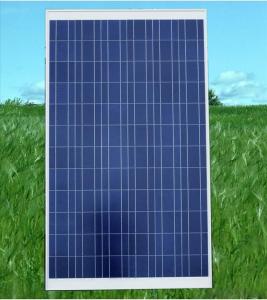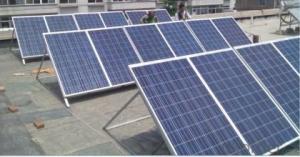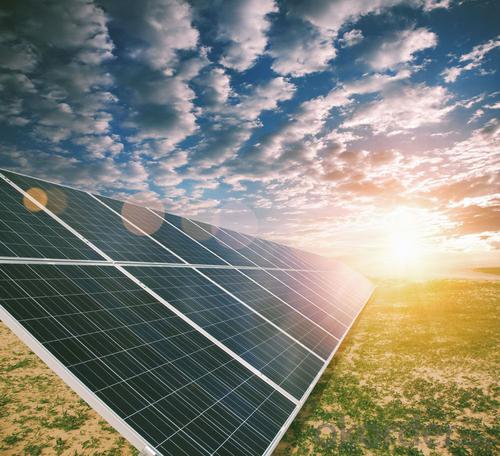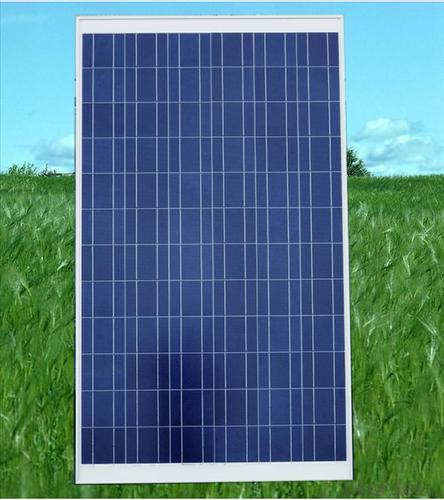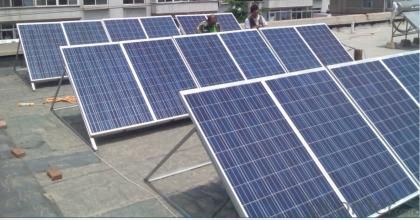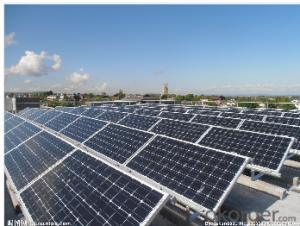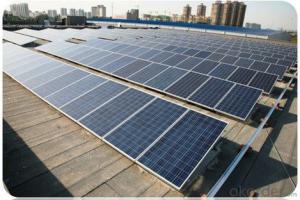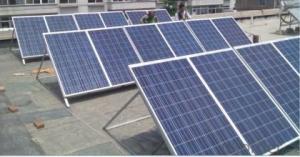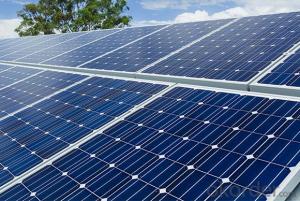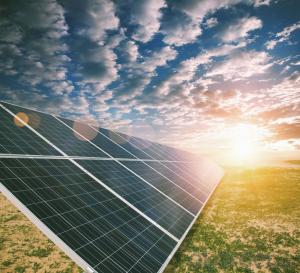Missouri Solar Panels - CNBM Solar Polycrystalline 6 Series (55-60W)
- Loading Port:
- China main port
- Payment Terms:
- TT OR LC
- Min Order Qty:
- 100000 watt
- Supply Capability:
- 10000000 watt/month
OKorder Service Pledge
OKorder Financial Service
You Might Also Like
Introduction
This installation Manual contains essential information for the electrical and mechanical installation that your must know before installing CUSTOMER PV modules. This also contains safety information you need to be familiar with .All the information described in this manual are the intellectual property of CNBM and based on the technologies and experiences that have been acquired and accumulated in the long history of CUSTOMER. This document does not constitute a warranty, expressed or implied.
CUSTOMER does not assume responsibility and expressly disclaims liability for loss, damage, or expense arising out of in anyway connected with installation, operation, use or maintenance of the PV modules. No responsibility is assumed by CUSTOMER for any infringement of patents or other rights of third parties that may result from use of PV module.
CUSTOMER reserves the right to make changes to the product, specifications or installation manual without prior notice.
Components

Data sheet
| Characteristics | |
| Max Power Voltage Vmp (V) | 17.4V-17.6V |
| Max Power Current Imp (A) | 3.17A-3.41A |
| Open Circuit Voltage Voc (V) | 22.4V-22.6V |
| Short Circuit Current Isc (A) | 3.38A-3.64A |
| Max Power Pm (W) | 55W-60W |
| Temperature Coefficient of Cells | |
| NOCT | 47℃±2℃ |
| Temperature Coefficients of Isc (%/℃) | 0.06% |
| Temperature Coefficients of Voc (%/℃) | -0.33% |
| Temperature Coefficients of Pmp (%/℃) | -0.45% |
| Mechanical Data | |
| Type of Cells (mm) | Poly156×62.4 |
| Dimension | 820×510×30mm |
| Weight | 4.9kg |
| NO.of Cells and Connections | 3×12=36 |
| Limits | |
| Operating Temperature | –45°C to +80°C |
| Storage Temperature | –45°C to +80°C |
| Max System Voltage | 700V |
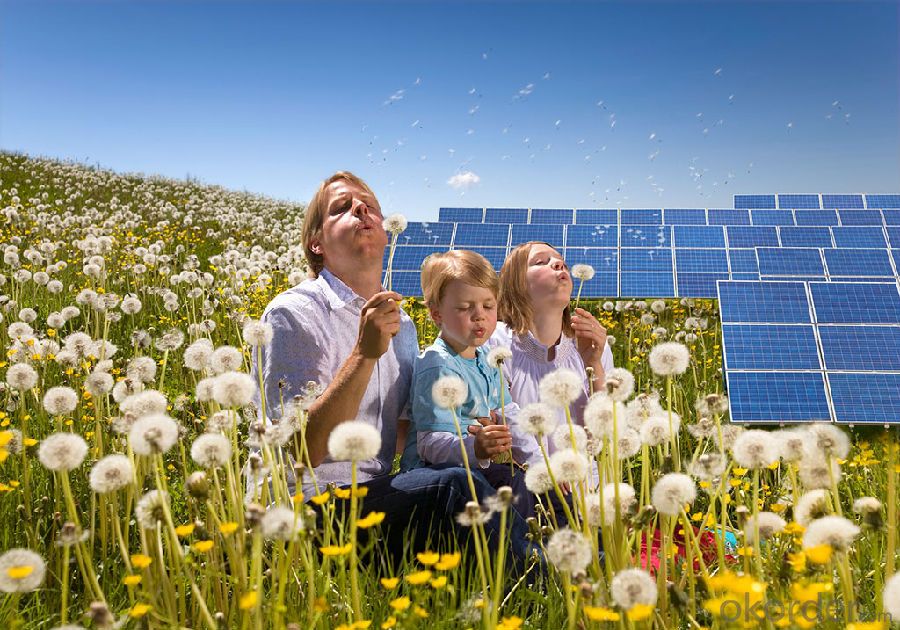
FAQ:
1. How long will my inquiry get response?
Your inquiry related to our products or prices will be replied within 24 hours.
2. Can I get professional service and suggestion?
Well-trained and experienced staffs to answer all your questions in fluent English.
3. Do you accept OEM or customized design?
OEM & ODM, any your customized lightings we can help you to design and put into product.
4. What if I need specific design?
Distributorship are offered for your unique design and some our current models.
- Q: Are solar panels environmentally friendly?
- Yes, solar panels are environmentally friendly. They produce clean and renewable energy by harnessing sunlight, which reduces reliance on fossil fuels and decreases greenhouse gas emissions. Additionally, solar panels have a long lifespan and can be recycled, further minimizing their environmental impact.
- Q: Can solar panels be installed on outdoor lighting fixtures?
- Yes, solar panels can be installed on outdoor lighting fixtures. In fact, many outdoor lighting fixtures, such as solar-powered garden lights or street lights, come with built-in solar panels that allow them to harness energy from the sun to power the lights. This eliminates the need for electrical wiring and makes them more energy-efficient and environmentally friendly.
- Q: How do solar panels affect the electrical grid?
- Solar panels can have both positive and negative effects on the electrical grid. On the positive side, solar panels generate clean and renewable energy, which reduces the reliance on fossil fuels and decreases greenhouse gas emissions. Additionally, solar panels can help decentralize the grid by allowing individual households or buildings to generate their own electricity, reducing strain on the overall grid. However, the intermittent nature of solar power can pose challenges for grid operators, as it requires careful management to balance supply and demand. Moreover, the increased number of solar installations can also lead to voltage fluctuations and grid instability if not properly managed. Overall, while solar panels offer numerous benefits, their integration into the electrical grid requires careful planning and coordination.
- Q: How do solar panels affect home insurance rates?
- Solar panels can potentially have a positive impact on home insurance rates. While the initial cost of installation may increase the overall value of a home, insurance companies often offer discounts or special policies for homes equipped with solar panels due to their reduced reliance on traditional energy sources and increased energy efficiency. However, it is recommended to consult with insurance providers to determine the specific impact on rates as it may vary depending on the location, type of system, and other factors.
- Q: Can solar panels be installed on bus stops or shelters?
- Yes, solar panels can be installed on bus stops or shelters. This allows them to generate electricity from sunlight, which can be used to power lighting, signage, and other amenities at the bus stops or shelters. It also helps in reducing reliance on grid electricity and promotes the use of renewable energy sources.
- Q: A homeowner is considering putting a horizontal solar panel on her roof to heat water for domestic use. An average increase of water temperature each day from 60oF to 20oF is wanted for 50 gallons. How large a panel would be needed on a clear winter day at 40o latitude if the overall efficiency is 50%?
- Here's a typical 4' x 8' collector rating. 40 degree latitude would be a cool climate, so you look at row D, water heating in a cool climate. Probably take the middle rating, mildly sunny day, and it is 0,000BTU per panel per day (it's 9,000 on a sunny day). 38,700 BTU / 0,000 BTU = 3.87, they'd need about 3 to 4 panels. If you used the sunny day number, you'd only need 2, but 3 is more realistic, as it is not always a sunny day.
- Q: Was looking at 0w solar panel kit. Does this mean, all I can use is something like a 0W CFL light bulb and nothing else?
- Graham is on the right track. However, you need to factor in a 80% DC to AC conversion loss. But yes a 0W CFL is about the size of it... Harbor Freight sells a system consisting of panels, battery, inverter, and TWO CFL's for $250. (You can power 2 CFL's off the grid for a very long time for $250)
- Q: Most solar panels (the flat ones that go onto roofs of houses) reject electricity produced by the panels if they are too low in voltage. For example, on a cloudy day, although the panels may still get some sunlight to produce some electricity, it is rejected because its too low in voltage. So, does anyone have any ideas?
- On a day that's really dark, I don't think there is anything that can reasonably be done. The voltage is low because the power coming out of the panels is low. A circuit could step that voltage up, but could not increase the power. According to our user's manual, it takes 30 to 40 watts to run our inverter. So if the panels are putting out more than that, it's worth running the inverter. If not, then it's better to not even run it, so the inverter cuts out. A charge controller for a battery would have similar behavior if well-designed. Our array is large enough that during even relatively dark days, there is enough power so that the inverter won't cut out.
- Q: Can solar panels be installed on a church or religious building?
- Yes, solar panels can be installed on a church or religious building. In fact, many religious organizations have embraced renewable energy and installed solar panels to reduce their carbon footprint and lower their energy costs.
- Q: Need solar panel info with dimensions and also the total cost of the whole equipment for setting up of the required solar panels for a 2-story home
- There are many, upon many variations of equipment needed for a complete solar home. I would call several contractors in your area that deals with it and get estimates. You have to look at what your wattage diet is at your home. How many watts are you using for your AC and heat. Which can vary by age, efficiency, insulation of home, etc. Look at your electric bill for a normal summer month and a normal winter month, then estimate your heating and cooling (Sometimes can be as much as 70% of the bill). You will see on your bill your toal kilowatt hours. ( Kilowat = 000 Watts) Solar systems can start as low as $2.00/watt, but can rapidly approach $20.00/watt depending on the difficulty of application etc.... Here is the great thing, in many areas of the country there may be rebates from the county or state. And what you don't use can be fed back into the grid, and you get paid for it. But as always - Call a quailified contractor and get the right system for your home.
Send your message to us
Missouri Solar Panels - CNBM Solar Polycrystalline 6 Series (55-60W)
- Loading Port:
- China main port
- Payment Terms:
- TT OR LC
- Min Order Qty:
- 100000 watt
- Supply Capability:
- 10000000 watt/month
OKorder Service Pledge
OKorder Financial Service
Similar products
Hot products
Hot Searches
Related keywords

